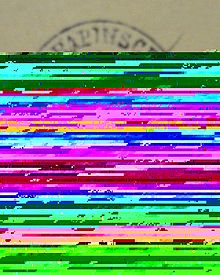A wide variety of failures can cause physical damage to storage media. CD-ROMs can have their metallic substrate or dye layer scratched off; hard disks can suffer any of several mechanical failures, such as head crashes and failed motors; tapes can simply break. Physical damage always causes at least some data loss, and in many cases the logical structures of the file system are damaged as well. Any logical damage must be dealt with before files can be salvaged from the failed media.
Most physical damage cannot be repaired by end users. For example, opening a hard disk in a normal environment can allow airborne dust to settle on the platter and become caught between the platter and the read/write head, causing new head crashes that further damage the platter and thus compromise the recovery process. Furthermore, end users generally do not have the hardware or technical expertise required to make these repairs. Consequently, costly data recovery companies are often employed to salvage important data.
Recovery techniques
Recovering data from physically-damaged hardware can involve multiple techniques. Some damage can be repaired by replacing parts in the hard disk. This alone may make the disk usable, but there may still be logical damage. A specialized disk-imaging procedure is used to recover every readable bit from the surface. Once this image is acquired and saved on a reliable medium, the image can be safely analysed for logical damage and will possibly allow for much of the original file system to be reconstructed.
Hardware repair
Examples of physical recovery procedures are: removing a damaged PCB (printed circuit board) and replacing it with a matching PCB from a healthy drive, performing a live PCB swap (in which the System Area of the HDD is damaged on the target drive which is then instead read from the donor drive, the PCB then disconnected while still under power and transferred to the target drive), read/write head assembly with matching parts from a healthy drive, removing thehard disk platters from the original damaged drive and installing them into a healthy drive, and often a combination of all of these procedures. Some data recovery companies have procedures that are highly technical in nature and are not recommended for an untrained individual. See companies such as Ontrack, SalvageData and DriveSavers. Neither of them will void the manufacturer's warranty.
Disk imaging
The extracted raw image can be used to reconstruct usable data after any logical damage has been repaired. Once that is complete, the files may be in usable form although recovery is often incomplete.
Open source tools such as DCFLdd or DOS tools such as HDClone can usually recover data from all but the physically-damaged sectors. Studies[1][2] have shown that DCFLdd v1.3.4-1 installed on a Linux 2.4 kernel system produces extra "bad sectors" when executed with certain parameters[3], resulting in the loss of information that is actually available. These studies state that when installed on a FreeBSD kernel system, only the bad sectors are lost. DC3dd, a tool that has superseded DCFLdd, and ddrescue resolve this issue by accessing the hardware directly[3]. Another tool that can correctly image damaged media is ILook IXImager.
Typically, hard disk drive data recovery imaging has the following abilities[4]: (1) communicating with the hard drive by bypassing the BIOS and operating system which are very limited in their abilities to deal with drives that have "bad sectors" or take a long time to read. (2) reading data from “bad sectors” rather than skipping them (by using various read commands and ECC to recreate damaged data). (3) handling issues caused by unstable drives, such as resetting/repowering the drive when it stops responding or skipping sectors that take too long to read (read instability can be caused by minute mechanical wear and other issues). and (4) preconfiguring drives by disabling certain features, such as SMART and G-List remapping, to minimize imaging time and the possibility of further drive degradation.



No comments:
Post a Comment